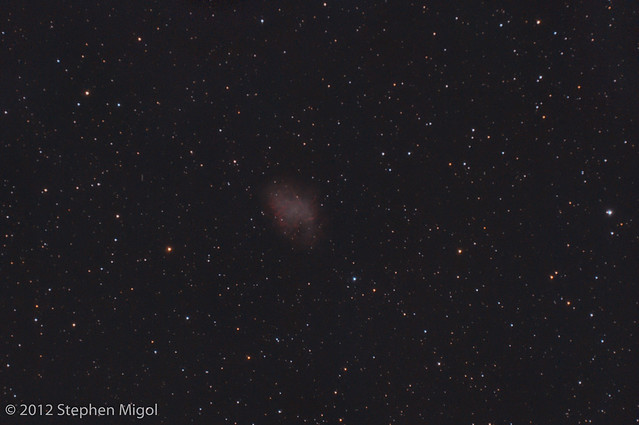Creation of a galaxy mini-imaging system.
I purchased this scope to correspond with the Mars opposition of 2004. It served well as I got started viewing from the driveway and then began to chase after the moon, bright clusters, and other planets.
Later, I put this scope on the shelf in favor of the SV4 refractor.
I have used it for imaging a few times. Given the focal length, it's still faster than the SV4 with a barlow.
My best picture of M1 came from this scope
As well as the best picture of the Siamese Twins
And the best picture of the Ring Nebula
And this picture of the Helix
And planets, of course.
I purchased this scope to correspond with the Mars opposition of 2004. It served well as I got started viewing from the driveway and then began to chase after the moon, bright clusters, and other planets.
Later, I put this scope on the shelf in favor of the SV4 refractor.
I have used it for imaging a few times. Given the focal length, it's still faster than the SV4 with a barlow.
My best picture of M1 came from this scope
As well as the best picture of the Siamese Twins
And the best picture of the Ring Nebula
And this picture of the Helix
And planets, of course.
Since I'm borrowing Carl's 583 camera, I'd been wanting to try this as a galaxy setup.
A few configuration changes, a resurrected SSAG, cobbled together autofocus system, and some filters gives this current lightweight mini-frankenscope:
Nearly a year ago, I'd gotten an extra HSM motor from Starlight Systems so that I could make the autofocus system. I've mounted the bracket with high-temperature hot melt glue. If it works well, then I may swap it for epoxy. In the meantime, the glue should hold. Also, I'm not sure if there is enough reduction for the focus knob. If it turns out to need a bigger pulley on the knob, I'll have to make one. Bench testing, there's a range of 1k steps for a full turn of the knob. When I update the firmware on the controller, there should be close to 5k steps for this same range.
I know the drill about a moving mirror and flop and all that jazz. From what I've seen with this mak, the spring and grease do a good job of holding the mirror cell tightly. The aluminum body and 3x folded light path is more of a factor with temperature drop.
I've not had the chance to see if the off-axis guider can see starlight. Unlike the refractor, I can't look down the objective and see the camera. If this turns out to be a problem, I can put the ST80 and SSAG on the top of the rings, how I used to run this setup with the DSLR.
Next steps:
Solder together some 7.5 ohm .5 watt resistors to make an anti-dew heater.
Wiring harness and cabling.
Flats to check for vignette.
Profile the setup in CCDAutopilot.
... take some images!






Comments
Post a Comment